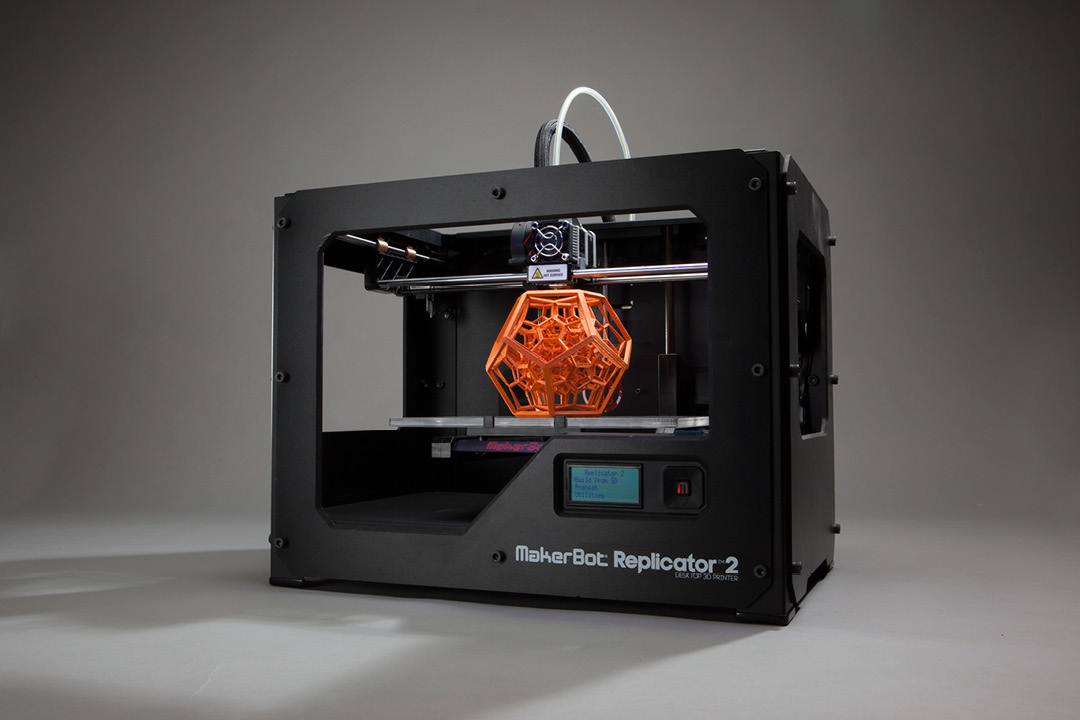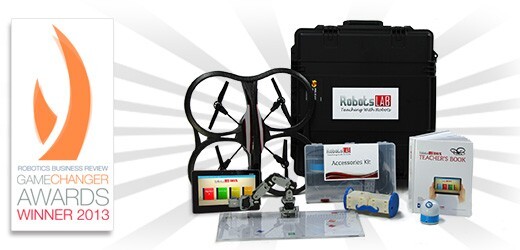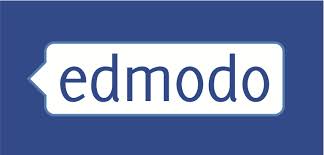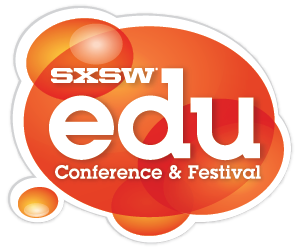Why We Love EdTech (And You Should, Too!)
What is the future of EdTech? Well, it took almost 500 years for EdTech to progress from the hornbook to the magic lantern. The hornbook appeared in England in the 15th Century. First immortalized in Shakespeare’s Love’s Labor’s Lost,
- ARMADO. [To HOLOFERNES] Monsieur, are you not lett'red?
- MOTH. Yes, he teaches boys the hornbook. What is a, b, spelt backward with the horn on his head?
- HOLOFERNES. Ba, pueritia, with a horn added.
The hornbook made its way to the colonies where it was gradually replaced by the equally low-tech slate and blackboard. It wasn’t until the latter end of the 19th Century and the beginning of the 20th that EdTech underwent a revolutionary change.
Imagine if you can the impact of the projected images of the magic lantern or the 3D images of the stereoscope on students for whom the written word in books, on slates and blackboards that had been the only source of information. At the same time their ability to express themselves individually improved as slate and blackboard were pushed to one side by that mass-produced writing instrument the pencil and its work-mate, inexpensive paper.
While it took 500 years for EdTech to progress from the horn book to the hand-held, 3D stereoscope, it took less than 50 years for the next EdTech revolution, electricity, to run its course. Edison said let there be light and school rooms were never the same again from their lighting to the available teaching tools. According to the infographic below the moving picture projector arrived in 1925, the overhead projector in 1930 and the mimeograph in 1940. Radio carried information to school rooms across the nation in the 30’s and 40’s and television first found its way into the classroom in the 1950’s. While radio and tv appeared to be the future of EdTech, yet another revolution was underway as the transistor replaced the tube in radios and televisions.
The digital revolution began with the transistor. The transistor brought about the microprocessor revolution and the microprocessor begot the handheld calculator which brought relief to those of us who had always found math tedious and despair to some math teachers who suddenly found their dullest students capable of adding, subtracting, multiplying and dividing more quickly and accurately than they. The handheld calculator was quickly followed by the personal computer revolution and software that allowed poor spellers like me to quit worrying about every word and begot the Internet revolution….
What then is the future of EdTech? We believe it is technological revolution upon revolution, each building on the preceding revolution and hastening the arrival of the next!

- 0 Comments
- Feb 13, 2014 11:00:00 AM
- Posted by Mike Nardine
- Topics: EdTech, Education, 21st Century Classroom, School, Student Engagement
'Robot Olympics' 17 Cyborg Athletes to Vie for Glory in DARPA Challenge
We look forward to DARPA challenge, awesome robots are coming! But with all due respect to DARPA challenge, the real Robot Olympics game is the ' NAO Olympics' . RobotsLAB has crated a series of sport challenges with the NAO robot. Check it out, game on!
- 0 Comments
- Feb 11, 2014 2:30:00 PM
- Posted by Mike Nardine
- Topics: Robotics, EdTech, STEM, Education, Computer Science, NAO
Technology Trends for Teachers
Teenagers can make for difficult students. They might show up for class, but that doesn’t mean they will participate--or even stay awake! As the old saying goes, "you can lead a horse to water but you can’t make him drink." Does not matter that the horse needs water to get through the day or that the teenager needs the skills taught by science,technology, engineering and math to get a job when he leaves high school. Sweet reason won’t get either to do what is best for them. An old cowboy once said that it took a 2x4 across the head to get cooperation from the horse. That sounds a bit harsh and might lead to problems with PETA and the SPCA. The same method with teenagers would get a teacher 20 years in the pen! But after trying reason and violence, what’s left?
Simple! TECHNOLOGY is the answer to the question posed by the preceding paragraph. STEM teachers are no longer restricted to lectures, boring books or trips to the blackboard. They can count on great learning-software like Scratch, new technological paradigms like the 3D printer and engaging, interesting teaching tools like the RobotsLAB BOX.

- 0 Comments
- Feb 10, 2014 12:30:00 PM
- Posted by Mike Nardine
- Topics: EdTech, Education
Oklahoma public schools are boosting their STEM learning with RobotsLAB BOX
Oklahoma public schools are about to receive an enormous boost to their STEM learning programs. The innovative Oklahoma City STEM learning facility techJoynT has teamed with us here at RobotsLAB in San Francisco to bring our award winning RobotsLAB BOX with its innovative math teaching aids to public school students in the state. Yes, the study of math is about to become exciting!
As those of you familiar with this blog are aware, our BOX is designed to assist math educators in teaching abstract math concepts by engaging students with robots. And as Dr Peter Stone, Alfred P. Sloan Research Fellow, Guggenheim Fellow, AAAI Fellow, Fulbright Scholar, and Professor in the Department of Computer Science at the University of Texas at Austin, explains “You don’t need to be experienced with robotics or have a degree in computer science, just an enthusiasm for your subject area...You can open the BOX, turn on the preloaded tablet and within minutes be explaining quadratic equations with a quad copter.” This beats pontificating in front of a blackboard every time!
- 0 Comments
- Jan 31, 2014 6:02:00 PM
- Posted by Charles Nimrad
- Topics: Math, About the BOX, Local News, EdTech, STEM, Education, 21st Century Classroom, School, Student Engagement
5 Tools Everyone In The Educational Robotics Industry Should Be Using
Of course the first answer to the question posited by the title of this piece is a facetious one--lots of money! So let us qualify the question a bit more by asking, "What are 5 tools everyone in the educational robotics industry should be using that most of us in the industry can afford?"
Since learning to code is so important to any STEM discipline, the first tool everyone in the educational robotics industry should be using is the online community and programming language called Scratch. This innovative site helps kids learn its namesake programming language and create interactive stories, games and computer animations. This outstanding tool is actually free!
Since math is basic to any scientific endeavor, the ability to interest and engage students in math is crucial to the educational robotics industry. Our second tool that everyone in the industry should be using, the RobotsLAB BOX, has proved its ability to interest and engage kids in math with an innovative combination of robots and tablets in many progressive school districts. The old teaching standbys like the book and the whiteboard can’t compete with "cool" robot helicopters demonstrating quadratic equations in real-time on a tablet.
- 0 Comments
- Jan 24, 2014 12:00:00 PM
- Posted by Elad Inbar
- Topics: Math, Robotics, Teaching with the RobotsLAB BOX, About the BOX, EdTech, STEM, Education, Computer Science, NAO, code, 21st Century Classroom, School, Student Engagement, Middle School
How To Solve The Biggest Problem With STEM Education
Judging from the number of e-gadget users in this country, technology is all the rage. Over 90% of adults have a cell phone. Thirty-four percent (34%) own a tablet. And no one doubts that the percentages will continue to rise. One might also be forgiven for thinking our schools are up to the job of graduating the vast numbers of science, technology, engineering and math students needed to keep this country in the forefront of this technology wave--the interest is obviously there. Unfortunately that is not the case!
By 2018--now less than 4 years and a single generation of high school students away--we are expecting at least 8 million jobs in the US dependent on skills learned in STEM learning courses. But experts estimate that less than five million of those jobs will go to kids from American schools, with three million or more of these well-paid positions going to foreign applicants.
Why is this happening? Why can’t our schools keep up with the demand for young people trained in science, technology, engineering and math? Well as you might expect there are all sorts of excuses for this, from lack of funding to a lack of interest in STEM learning on the part of students themselves. We at RobotsLAB can’t do much about the funding issue; that requires political action. What we can do is help change the culture of math education.
- 0 Comments
- Jan 23, 2014 10:00:00 AM
- Posted by Mike Nardine
- Topics: Math, Teaching with the RobotsLAB BOX, About the BOX, EdTech, STEM, Education, 21st Century Classroom, Student Engagement, Middle School
Edmodo Top 10 Paid Educational Apps


Following the popularity of our previous blog post about Edmodo top 10 free educational apps, we've gathered this time Edmodo top paid educational apps of 2013.
- 0 Comments
- Jan 14, 2014 10:00:00 AM
- Posted by Anna Sandler
- Topics: EdTech, Education, Student Engagement
Edmodo Top 10 Free Educational Apps


Edmodo, as a free social learning platform for teachers to share content and manage student learning, offers over 500 educational apps.
Each one of those educational apps was designed to include one or more of the following:
- Get students excited about learning in a familiar environment;
- For teachers - to continue classroom discussions online;
- Introduce polls to check for student understanding;
- Award badges to individual students based on performance or behavior;
- Connect teachers to their students, administrators, parents, and publishers
- Connect teachers to other teachers;
- Track students progress;
- Get the pulse of their classrooms through student reactions to quizzes, assignments, and discussion posts that capture understanding, confusion, or frustration.
- Personalize learning for every student;
- Help teachers to amplify their lesson plans;
The top 10 free educational apps of Edmodo 2013 are fully described below.
- 2 Comments
- Jan 13, 2014 10:00:00 AM
- Posted by Anna Sandler
- Topics: EdTech, Education, Student Engagement
RobotsLAB BOX is a finalist at LaunchEDU EdTech competition at SxSW
It is well known that BIG is the adjective most appropriate for the State of Texas. And nothing that comes out of Texas is bigger than that series of film, interactive, and music festivals and conferences titled SXSW (South by SouthWest) that has taken place in Austin, Texas the Spring of every year since 1987.
How big, you ask? Well, where else will you find over 250,000 performers, bands, films and other exhibits in the first weeks of March!

And while the thousands of bands, performers and independent films make for a great time after a long winter, South by SouthWest isn’t just about music and film. Long considered a breeding ground for new ideas and creative technologies, it is also about recognizing important innovations in media, human computer interaction, and perhaps most important of all to our nation's’ continued technological dominance, creative and innovative new ventures in education technology like our RobotsLAB’s BOX. The BOX is one of only ten finalists selected to participate in the SXSWedu Festival after months of extensive evaluation of hundreds of applicants by a panel of stakeholders including university professors, teachers, administrators and policy makers.
- 1 Comments
- Jan 9, 2014 9:20:00 PM
- Posted by Mike Nardine
- Topics: EdTech, Awards
Here’s why we absolutely need EdTech
Here’s a question for you: What is your opinion as to the importance of EdTech in education? EdTech, as you know, is short for educational technology.
What defines EdTech, you ask?
Good question! You see the term everywhere but no definitions. So let’s go with the definition advanced by our good friends at Wikipedia: "Educational technology, sometimes termed EdTech, is the study and ethical practice of facilitating e-learning, which is the learning and improving performance by creating, using and managing appropriate technological processes and resources…" "Appropriate technological processes and resources" include more than just the Internet, although online courses are important tools; tablets, computers, cell phones, the whole digital zoo is included. Even robots! Especially robots!

- 0 Comments
- Dec 30, 2013 4:30:00 PM
- Posted by Charles Nimrad
- Topics: EdTech, STEM, Education, 21st Century Classroom, School, Student Engagement, Middle School
Relevant Posts
Popular Posts
Subscribe to Email Updates
-
I Want To Learn MoreADDITIONAL INFORMATION


